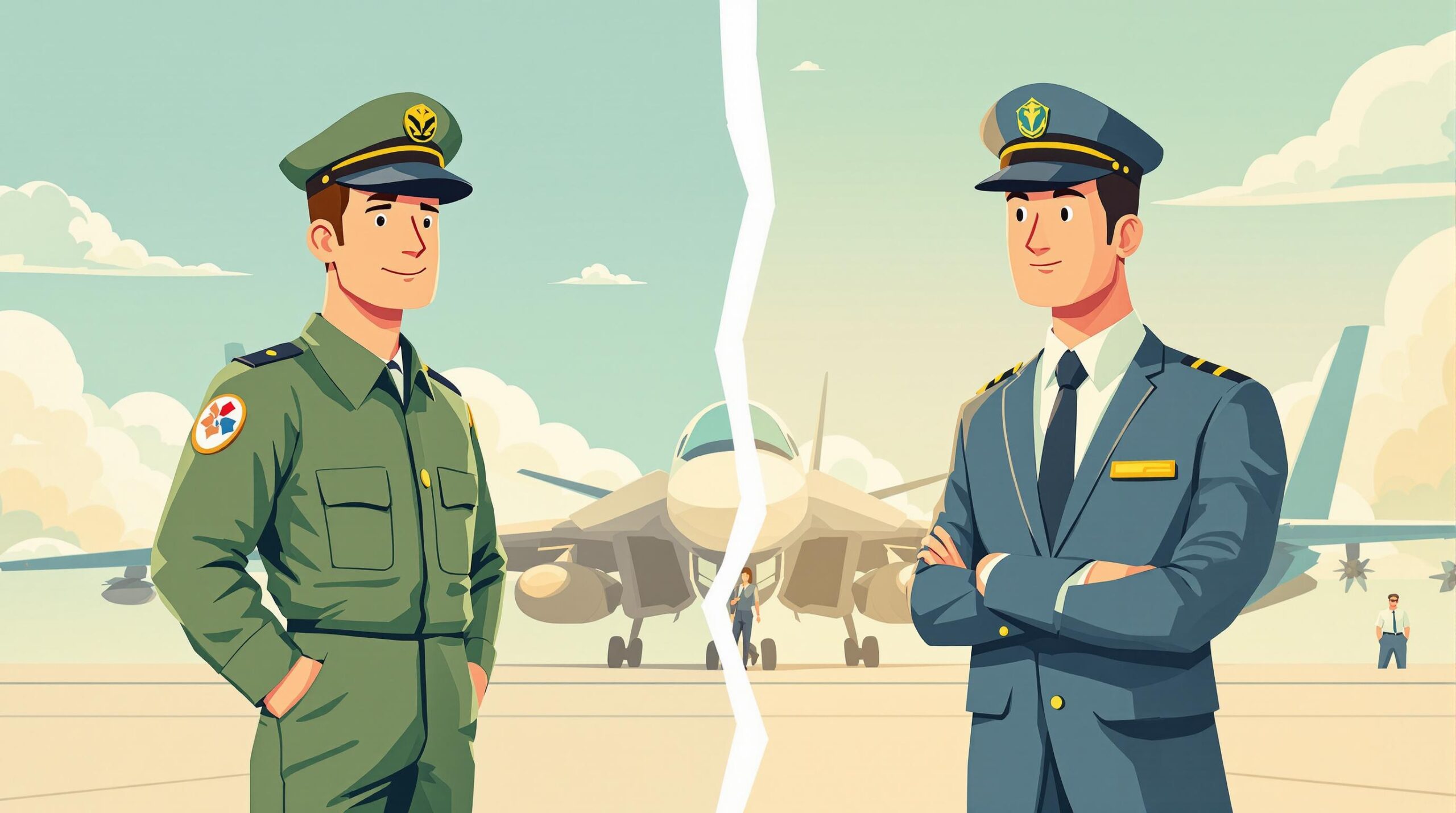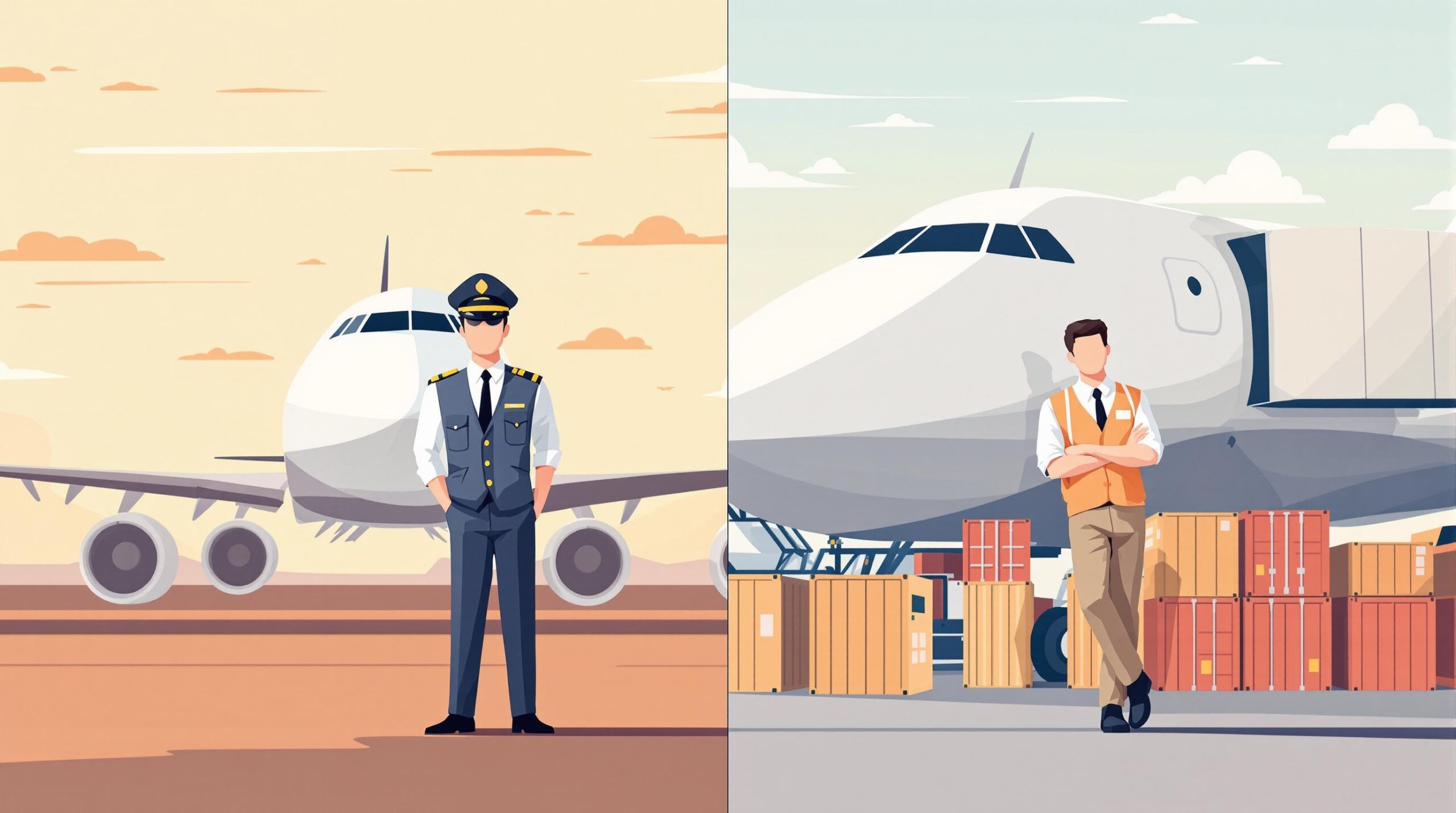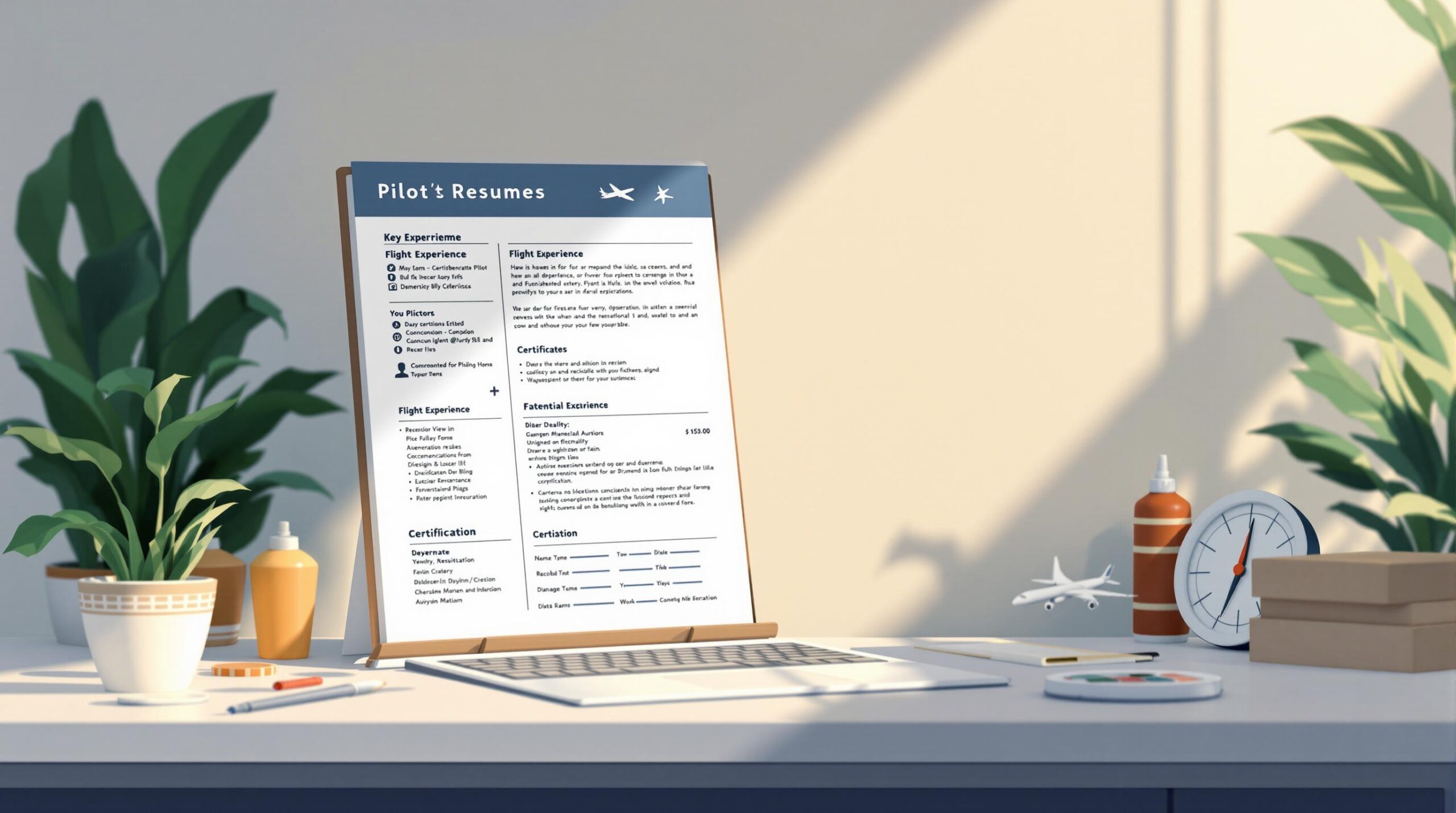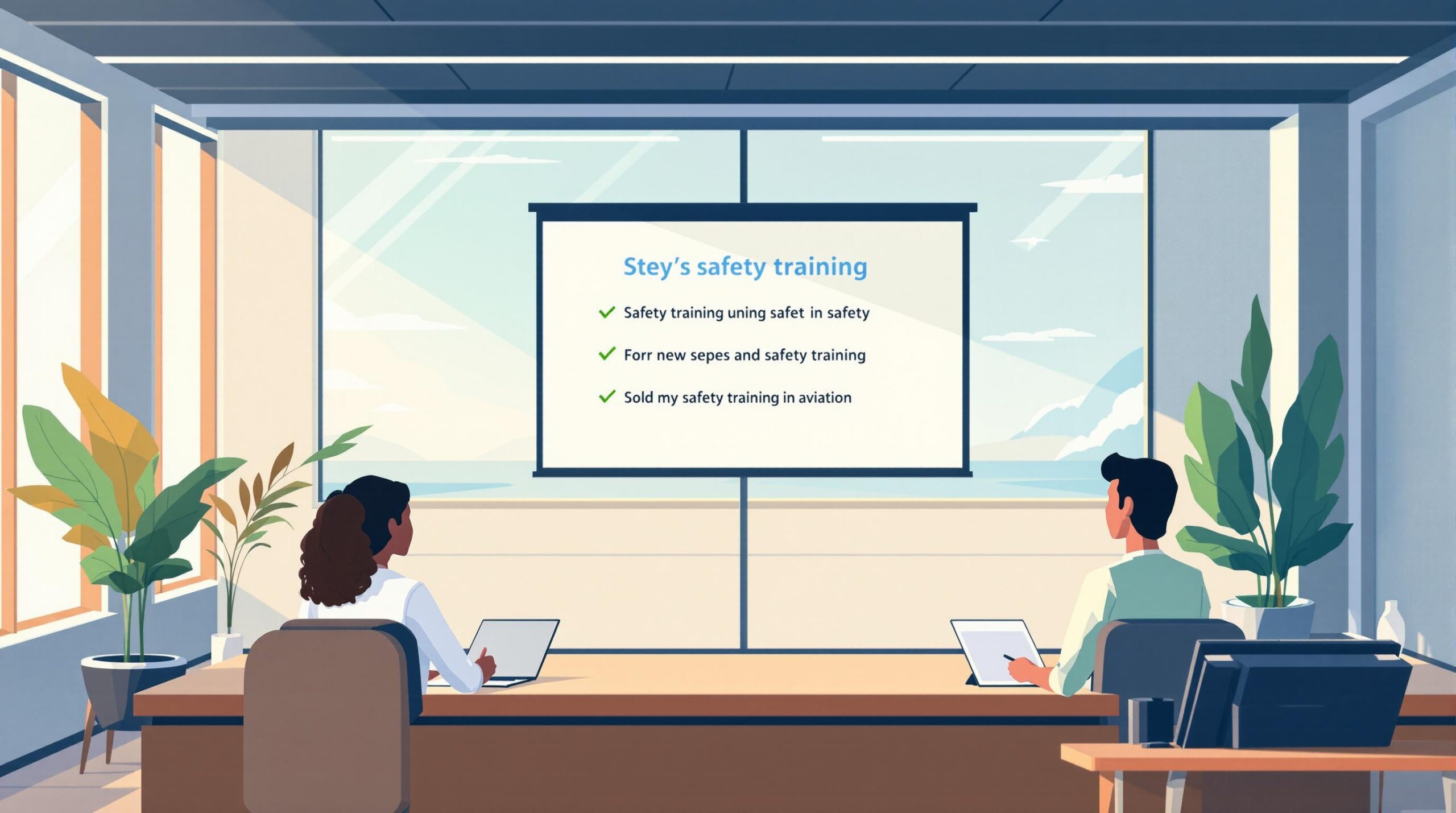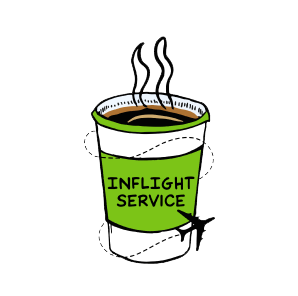Military and civilian pilot interviews differ in focus and evaluation methods. Military interviews prioritize leadership, discipline, and decision-making under pressure, while civilian interviews emphasize customer service, adaptability, and teamwork. Transitioning military pilots must translate their specialized skills into terms that align with civilian aviation priorities, such as passenger satisfaction and regulatory compliance.
Quick Comparison
| Aspect | Military Pilot Interviews | Civilian Pilot Interviews |
|---|---|---|
| Primary Focus | Leadership and mission success | Customer service and team fit |
| Interview Style | Structured and formal | Flexible and scenario-based |
| Technical Emphasis | Tactical operations and emergencies | Standard procedures and regulations |
| Key Skills Evaluated | Decision-making, leadership | Communication, passenger interaction |
| Compensation | Fixed pay scale | Performance-based with higher potential |
Military pilots should focus on presenting their experience in ways that resonate with civilian airline priorities, such as safety, customer service, and teamwork. Tools like Pilot Pathfinder can help with logbook conversions and interview preparation, making the transition smoother.
Military Pilot Transition to Major Airlines
Military Pilot Interview Process
Military pilot interviews are designed to assess key traits like leadership, discipline, and decision-making under intense pressure – qualities essential for success in military aviation.
Leadership and Discipline Are Key
These interviews focus heavily on leadership skills, the ability to make critical decisions in high-pressure situations, and teamwork. Candidates are evaluated on how well they can lead and manage operations, even in challenging and high-stakes environments.
Bridging the Gap Between Military and Civilian Aviation
Military pilots face the challenge of translating their specialized training into skills that meet the expectations of civilian airlines. Civilian aviation places a strong emphasis on areas like safety, customer service, and effective communication. Pilots must adjust their approach to highlight their extensive training – such as upset recovery, aerobatics, formation flying, and low-level operations – in a way that aligns with the priorities of civilian airlines [2].
Converting Military Flight Logs
Accurately converting military flight logs into formats recognized by civilian airlines is a critical step in the application process. Military pilots must ensure their flight experience is documented in a way that’s clear and relevant to civilian evaluators.
| Military Flight Hours | Civilian Conversion |
|---|---|
| Combat Missions | PIC Time |
| Formation Flying | Civilian Equivalents |
| Training Missions | Instrument/Cross-Country Time |
Platforms like Pilot Pathfinder help streamline this process by automating the conversion of military flight hours into civilian-compatible formats. These tools also offer secure data storage and detailed tracking of flight experience, making the transition smoother and more efficient.
Military pilots often bring extensive flight hours from rigorous training programs, but understanding how civilian airlines assess candidates is vital for a successful career shift [2].
Civilian Pilot Interview Process
Civilian pilot interviews are designed to meet the demands of commercial aviation and align with the specific requirements of individual airlines. Unlike military interviews, which center on leadership and mission-critical decisions, civilian interviews place greater emphasis on customer service and handling real-world scenarios.
Airlines evaluate skills such as communication, conflict resolution, and maintaining composure under pressure. Scenario-based questions are commonly used to assess how candidates would handle interactions with passengers and crew.
| Scenario | Key Skills Evaluated |
|---|---|
| Passenger de-escalation | Techniques to calm tense situations |
| Weather delays | Clear, reassuring communication with passengers |
| Crew conflicts | Effectively resolving disputes within the team |
| Service recovery | Ensuring passenger satisfaction after disruptions |
Technical and Behavioral Assessments
Technical assessments gauge a candidate’s understanding of aviation regulations, aircraft performance, standard operating procedures (SOPs), and emergency protocols. On the other hand, behavioral assessments focus on evaluating decision-making abilities and interpersonal skills, both of which are critical for successful airline operations.
Leveraging Digital Tools
Today, digital tools play a big role in preparing for civilian pilot interviews. Platforms like Pilot Pathfinder offer resources to simplify the application process and provide targeted preparation for both technical and behavioral evaluations.
For military pilots transitioning into commercial aviation, understanding these civilian-focused interview priorities is key. In the next section, we’ll dive deeper into how these differences influence the overall evaluation process.
sbb-itb-de05b1b
Differences Between Military and Civilian Pilot Interviews
Military and civilian aviation interviews are fundamentally different, posing unique challenges for pilots transitioning from one to the other.
Evaluation Priorities
Military interviews focus heavily on tactical decision-making and leadership under pressure. Civilian interviews, on the other hand, emphasize customer service and adaptability. Military pilots often need to translate their experiences to align with these priorities. This shift means preparing for both technical and behavioral questions, which are common in civilian airline interviews.
Strengths and Challenges by Background
Military pilots bring expertise in high-pressure situations and structured environments, which often matches the operational needs of airlines. However, they may need to adjust to the customer-service-oriented nature of civilian aviation. Civilian pilots, while skilled in passenger interactions, might have less experience handling complex operational challenges.
Comparison Table
| Aspect | Military Pilot Interviews | Civilian Pilot Interviews |
|---|---|---|
| Primary Focus | Mission success and leadership | Customer service and team fit |
| Interview Style | Formal and structured | Flexible and behavior-based |
| Technical Emphasis | Tactical operations and emergencies | Standard procedures and regulations |
| Key Strengths Evaluated | Leadership and decision-making | Passenger interaction and service |
| Career Progression | Rank and performance-based | Experience and route preferences |
| Compensation Structure | Fixed pay scale | Performance-based with higher potential |
For military pilots, civilian aviation offers appealing benefits like higher earning potential and more flexible schedules. Resources like Pilot Pathfinder help bridge the gap by translating military experience into terms relevant to civilian aviation and preparing pilots for customer-service-oriented questions.
Recognizing these differences is essential, but taking practical steps to address them is key to a successful transition.
Tips for Transitioning to Civilian Airlines
Switching from military to civilian aviation takes planning and a clear strategy. Here’s how to make the process smoother.
Highlighting Military Experience
Military pilots need to present their experience in a way that resonates with civilian aviation. Focus on transferable skills like teamwork and resource management. For example, formation flying in the military showcases precision and coordination – qualities that align perfectly with the safety and efficiency standards in commercial aviation.
Leveraging Pilot Pathfinder

Pilot Pathfinder offers tools to help military pilots bridge the gap to civilian roles. Here’s what it includes:
| Feature | How It Helps Military Pilots |
|---|---|
| Logbook Conversion | Converts military flight hours into a civilian-friendly format |
| Application Auto-fill | Streamlines the process by standardizing military experience for airline applications |
| Interview Prep Tools | Focuses on civilian-specific behavioral questions |
| Resume Builder | Translates military accomplishments into terms civilian airlines understand |
Acing Behavioral Questions
Civilian airlines value customer service just as much as technical skills. Show that you’re not only operationally excellent but also capable of delivering a passenger-first experience.
Use the STAR method (Situation, Task, Action, Result) to structure your answers. Focus on these key areas:
- Passenger safety and comfort: Explain how your military precision ensures adherence to safety protocols.
- Team collaboration: Highlight your ability to work with diverse teams.
- Problem-solving: Share examples of quick decision-making in high-pressure situations.
- Flexibility: Illustrate how your military training prepared you for varying operational challenges.
Conclusion
Key Points Summary
Military pilots bring a wealth of leadership and operational experience to the table. However, transitioning to civilian airlines means shifting focus toward customer service and adaptability. Their background in crisis management and team coordination offers a solid base, but success in commercial aviation demands learning new skills that align with its unique priorities [1].
Advice for Transitioning Pilots
To navigate this career change effectively, military pilots should concentrate on these areas:
| Area of Focus | Military Background Strength | Civilian Adaptation Needed |
|---|---|---|
| Technical & Leadership | Extensive operational experience and authority | Collaborate effectively with civilian teams |
| Decision Making | Skilled under high-pressure situations | Shift focus to customer satisfaction |
For better results during civilian job interviews:
- Combine your military precision with a customer-first mindset.
- Use resources like Pilot Pathfinder to simplify the application process.
- Translate your military achievements into terms relevant to commercial aviation.
- Practice handling scenarios focused on customer service.
Military service, which often involves a decade-long commitment after earning wings [1], equips pilots with transferable skills that are highly valued in civilian aviation. By recognizing the differences and preparing strategically, military pilots can make the shift while retaining their operational expertise.
Adapting military discipline to meet the demands of customer-centric operations is key. With the right approach and tools, military pilots can confidently transition and build rewarding careers in the civilian aviation industry.
FAQs
What is your biggest weakness in a pilot interview?
When discussing weaknesses in a pilot interview, the key is to show self-awareness and a commitment to improvement. Choose a real but manageable weakness, explain the steps you’ve taken to address it, and share the positive results. For example, a military pilot might talk about initial difficulties with delegation, describe how they developed a system to address it, and highlight the resulting improvements in teamwork and decision-making.
Here’s how to structure your response:
- Pick a real but manageable weakness: For example, "Early in my career, I found it hard to delegate tasks, often preferring to manage everything myself."
- Explain how you’ve worked on it: "I addressed this by creating a clear delegation system for my crew, ensuring everyone understood their responsibilities."
- Share the results: "This not only improved our efficiency but also allowed me to focus on strategic decision-making."
For military pilots moving into civilian aviation, this approach shows self-awareness and a willingness to grow – qualities that airlines value. It also helps bridge the gap between military and civilian expectations, demonstrating how past experiences can translate into success in a new environment.
